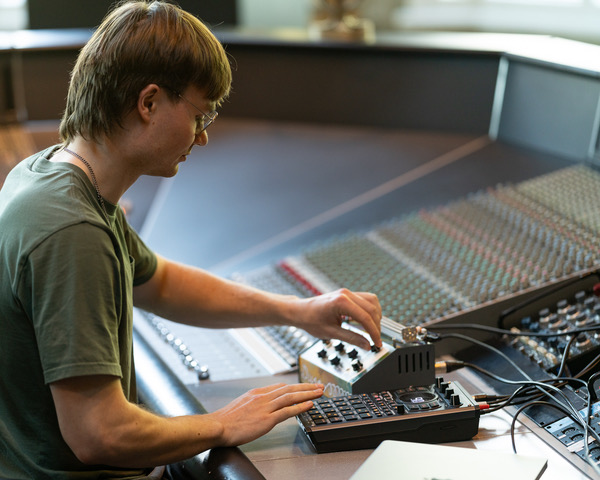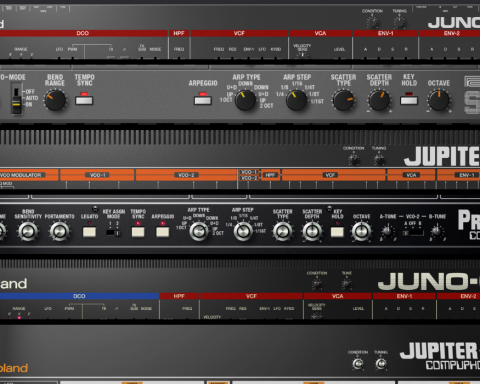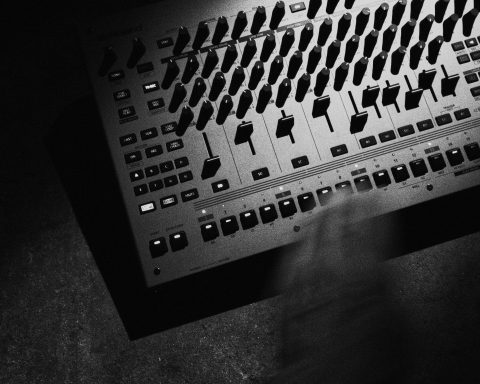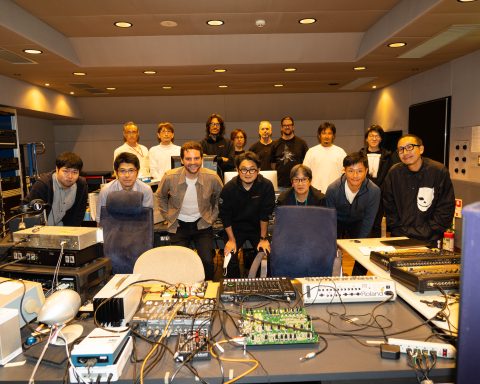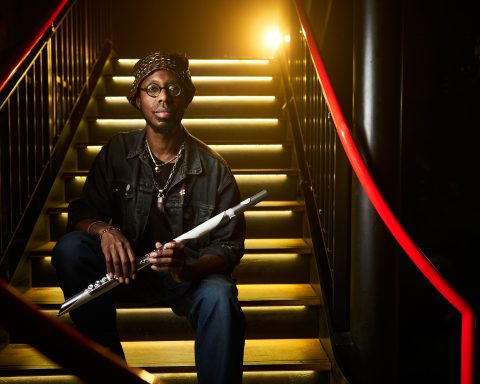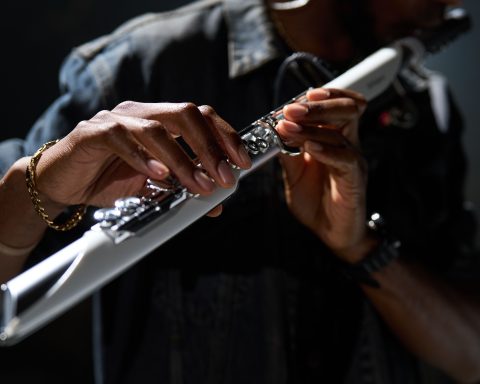Bob Mackenzie’s journey from a makeshift bedroom studio to working alongside world-class artists is nothing short of remarkable. Now engineering for James Blake, Mackenzie has built his career on passion, persistence, and a deep love for sound. In this exclusive interview, he shares how his early experiments in recording led him to prestigious studios like Peter Gabriel’s Real World, where he first crossed paths with Blake. That chance meeting set the stage for an exciting new chapter, working alongside the acclaimed artist/producer at his London studio and becoming an integral part of his creative projects. Join us as we delve into Mackenzie’s inspiring path, his approach to engineering, and the behind-the-scenes process of working with one of the most innovative musicians of our time.
Dynamic Nature
Following on from sessions with The Kooks, The 1975, Anne-Marie, King Krule, SAULT, and legends such as Robert Plant, Nile Rodgers, and Guns N’ Roses, Mackenzie’s new role extends beyond James Blake’s own music. He’s also deeply involved in Blake’s collaborations and ambitious new creative platform, CMYK. “CMYK involves people from James’ larger creative world—it’s a platform that all the collaborations can go out on,” Mackenzie says, emphasizing the dynamic nature of his work.
A key part of their sonic toolkit is the Roland SP-404MKII, a versatile sampler and effects unit that has become an essential ingredient in their sessions. Mackenzie offers unique insights into how they integrate this legendary piece of gear into their workflow.
"My original aim was to become a drummer. Specifically, I wanted to start a career as a YouTube drummer. I was 14, and at that time, I considered it a legitimate career path."
YouTube Days
How did your career in music begin?
It all stemmed from a love of music as a kid growing up in a town called Richmond in North Yorkshire. I joined my first band playing drums at the age of 12, and my obsession with music grew from there. It was a youth jazz band and the first time I’d experienced playing music with other people. It was a whole other level of excitement. We improvised a lot, which exposed me to lots of different styles and songs. So, it was a great way to learn about lots of different music.
When did you decide on a career in the music industry?
My original aim was to become a drummer. Specifically, I wanted to start a career as a YouTube drummer. I was 14, and at that time, I considered it a legitimate career path. You could load up videos, and your audience would become your income.
How did you attempt to become a YouTube drummer?
I borrowed a set of microphones from the local sound guy. I had a recording interface with four channels and started trying to record drums. The funny thing is, I didn’t make a single YouTube video in the end because, straight away, I fell in love with recording so much. I was fascinated by the difference between hearing something in real life and how that translated when you played back the recording. It was mind-blowing.

First Studio
How did you set up your first studio?
After my sister left the family home, I set up a little studio of my own in her old bedroom—with my parents’ permission, of course. The nearest facility to where I lived was in Newcastle so that effectively became the local recording studio, with 15-year-old me trying to work it all out.
How did you find musicians to record?
My dad would go to the local pubs and ask the bands playing there if they needed anywhere to record. That was literally how it all started. Luckily, we had some very supportive neighbors. I did an album with a folk singer who played at the pubs and then a double album with a local music guy who did all the gigs in town. That was a collaboration album with everybody he sang with. Hearing that stuff back now is pretty crazy.
Did you take any music courses?
When I was 16, I went to Queen Elizabeth Sixth Form College in Darlington and met loads of other musicians. At my school, only about four of us were really into music. That’s when I started recording college bands. It isn’t a music college per se, but they had a really good music department that offered a performance-based course called Popular Music. I loved my time there.
"My dad would go to the local pubs and ask the bands playing there if they needed anywhere to record. That was literally how it all started. Luckily, we had some very supportive neighbors."
How important was it for you to take a music-related course?
I love problem-solving, computers, and technology. Along with music, it ticked every box. Up until that point, I’d never felt so strongly about anything else I’d ever done in my life. I didn’t second-guess it. It was what I loved spending my time doing. And I was looking for opportunities that enabled me to do it as much as possible.
It helped that my parents were so supportive. There were never any questions about the uncertainty of the industry or how you can get your foot in the door. Thinking back, it was different when I was at school because there was always the question: how is this ever going to make you any money? Because, where I’m from, nobody did it. Nobody was a music producer or engineer. So, understandably, it just didn’t seem like a viable thing.
How important is it for younger people to have access to music facilities?
Really important. In my case, I was lucky my parents helped me. But other people should have the opportunity to give it a go and see where it can take you.

Hard Work, Dedication, and Sacrifice
Becoming a pro producer or engineer often requires more hard work, dedication, and sacrifice than people think.
That’s so true. When I was working at Real World, people often used the term “dream job,” and it was, but the hours were grueling, and it required complete commitment. It’s not like you have a life and a job. In the music world, they’re usually the same thing.
Is it fair to say an obsession with music is a prerequisite?
You need to be obsessed with it to make it work. Music is all I ever think about, all I ever consider. It takes priority over so many other things in life. It’s almost like you must have no sense of a plan B or that you could even possibly do something different. Because, at some point, another option will appear, and it will seem easier.
What advice would you give to younger people considering a career in music?
The reality of it is that it takes massive amounts of hard work, effort, and commitment. And there’s no shortcut to that at all. There’s no getting around that. But if a person does have that and music is their favorite thing in the world, I would say surround yourself with people who will encourage and support you. You need to meet people who have created amazing music careers out of a passion. It’s hard to draw the lines between the dots without meeting people who’ve actually made those steps in real life.
"You need to meet people who have created amazing music careers out of a passion. It’s hard to draw the lines between the dots without meeting people who’ve actually made those steps in
real life."
A Career Jump
When did your career begin to take off?
It wasn’t until I went to university at LIPA (the Liverpool Institute for Performing Arts) that I met people who had done the career jumps that I was trying to make. I studied Sound Technology, which involved engineering, production, and everything in between. That’s when I started to think, “I could really make this work.”
How did you go about meeting people in the industry?
It’s not something that can be done for you. I mean, nobody can meet people on your behalf. As part of the course, I had to interview a bunch of producers and engineers. Doing that opened some doors for me. The music industry is people-oriented. Successful people are normally friendly, calm, and have good people skills, which is great because you end up with nice colleagues. So many of my mentors helped me without even realizing it.
How did you land your first professional role?
The first thing coincided with my final year at LIPA in 2020—working with mix engineer Mike Cave, who’d just done a Lewis Capaldi record. Mike was based in Liverpool, so it was perfect. He was the best person to meet at that time because he was so positive, reassuring, and levelheaded. He was amazing—so inspiring. I was very lucky to meet him at that time.
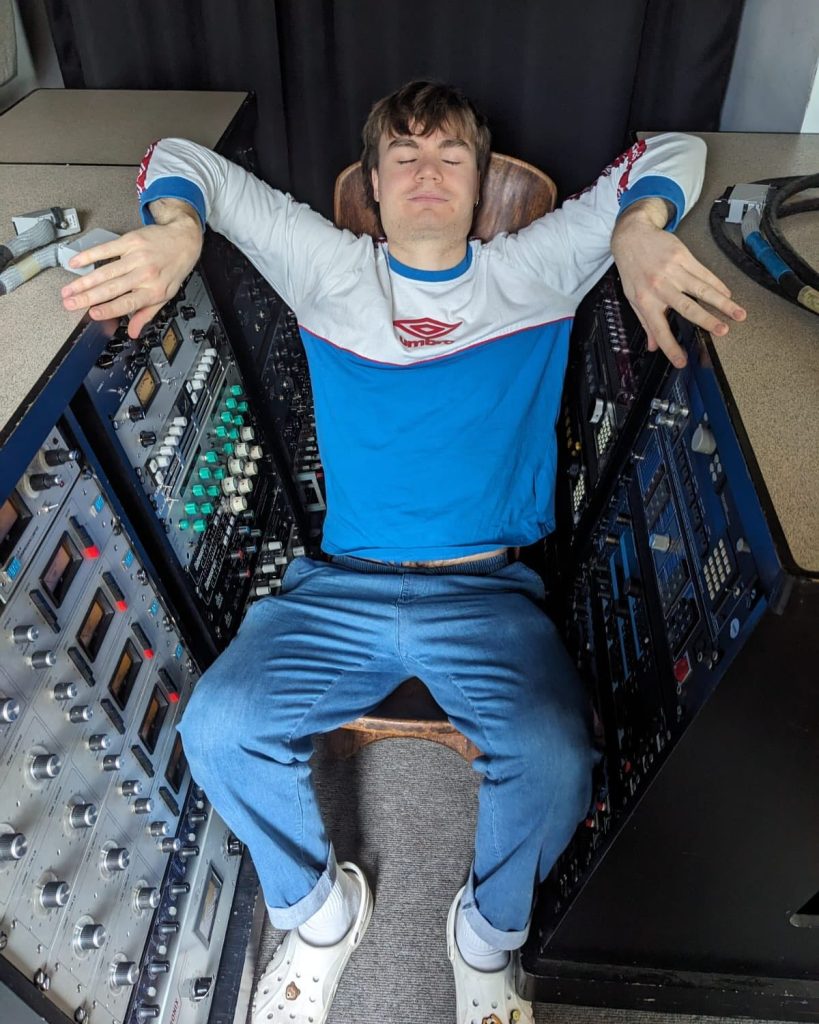
What did your role with Mike Cave entail?
I’d spend the day in his studio prepping his mixes, and then I’d watch him mix. I learned so much from him. He let me know about an engineering position at Liverpool’s Motor Museum. It’s an amazing studio, kind of like a rock ‘n’ roll studio. So, I went for that at his recommendation.
Job vacancies at commercial studios are relatively rare.
You have to have timing on your side, for sure. I was lucky because as I was just finishing at LIPA, the person at the Motor Museum was moving on. But when I went to interview there, I’d already met Al Groves, who runs the studio. I’d already met Al when I was at LIPA, and the initial conversations I had before the interview really helped. It was weird because I was up against all my uni classmates, but it is a small world!
Luckily, Al trusted me with that role. It was a huge step up. I went from doing eight songs in a year for my final uni project to doing at least one song a day in the studio. The learning curve was intense, but Al and engineer Loic Gaillard really guided me through it.
The Liverpool Era
What bands did you work with at the Motor Museum in Liverpool?
I worked with a lot of Scouse bands, including The Mysterines and STONE, who are really cool. My favorite project working there was King Krule’s most recent album, Space Heavy. It remains one of my favorite projects ever because it opened my eyes to the simplicity of facilitating the artist.
Take the guitar tone, for example. King Krule’s guitar sound was always a reference of mine, but I could never figure out how to get it. He turned up with a tiny pedalboard. It had a BOSS tuner (of course!), a SansAmp, a TC Electronic Shaker, and an EHX Polychorus. His sound was just those four pedals recorded in stereo out of the Polychorus (no amp), and it sounded perfect! It was the most straightforward guitar recording you could ever do: just two DI channels. That made me realize that all the magic is in the artist.
"A studio environment should be created to best suit the artist’s sound and workflow. Even the room's vibe is important—the lighting and smell should be tailored to the artist and the kind of thing you’re going for."
Outlook and Technique
To what extent did that change your outlook?
Before working with King Krule, I had the mindset that you always had to pull the artist up and show them things to do in the studio—almost like curating a world for them. My mindset changed from that to thinking, “I’m here to facilitate a creative heaven that is the studio.”
In other words, however the artist wants to use the studio is exactly what we will make sure happens in the cleanest and most efficient way. From that King Krule session onwards, I’ve always maintained that mindset. At the same time, it takes the pressure off in many ways. It’s an easier headspace to work in.
A studio environment should be created to best suit the artist’s sound and workflow. Even the room’s vibe is important—the lighting and smell should be tailored to the artist and the kind of thing you’re going for.
How do you adapt your techniques to an artist’s vision?
These days, my philosophy is that all the techniques I’ve picked up are in my back pocket, and I can refer to them with respect to the artist I’m working with.
If the studio is set up to dictate how things are going to be done entirely, then the focus is in the wrong place. If you already know how things are going to sound exactly, how the guitars are recorded, and are thinking, “This is the technique I always use no matter what,” then straight away, it’s not about the artist, their sound, or what they’re going for. The studio should be a blank canvas that can be painted to suit the artist you’re working with on that day.
With that King Krule session at the Motor Museum, all his instruments would be set up and ready to go, so whatever he went for would work and sound good. He totally dictated how that session went, and we enabled it. It happened really smoothly, and the result is something artistically authentic.

Welcome to the Real World
Your next big move was landing a role as house engineer at Peter Gabriel’s prestigious Real World Studios in 2022. How did that come about?
The Motor Museum was amazing. It was the perfect way to cut my teeth. But after I’d been there for two years, I realized my work would only improve if I had more opportunities to work with world-class artists. So, I wanted to maximize my chances of that happening.
I noticed the Real World position on Facebook. It was a studio that was always on my bucket list just to visit, so I knew I had to apply. It was quite a long process. I initially applied in September 2021 but didn’t start working there until March 2022. Out of the blue, I got a phone call from Tim Oliver, the Senior Consulting Engineer at Real World, asking if I could come down in a couple of weeks. It was kind of scary, but it was one of the best decisions I’ve ever made. Working there was a real privilege, and the studio team is amongst my favorite humans on the planet.
What was the first session you worked on at Real World Studios?
The first session I worked on was to tape, which was a first for me. Not only that, but it was also with Tom Jones. Up until that point, everything I’d worked on had been computer-based. So when I walked into my first session at Real World, there were no ProTools and no computer screen. It was another massive learning curve. It was a baptism of fire.
Fortunately, it was a pretty easy-going session, and I was assisting. I took it as an opportunity to learn as much as I could. There was the standard stuff you do when you’re assisting, like keeping everyone happy with brews and the hospitality side of things. But on the technical side, I was helping out with patching and some of the more rudimentary stuff. It wasn’t exactly what you might call high pressure, though it certainly felt it.
"Sometimes, something just sounds right for the job, regardless of where it was built or how much money it cost."
What was the most significant takeaway from your first session at Real World?
Honestly? How powerful Tom Jones’ voice is! We had a vintage Neumann M 49 mic set up, which is priceless, really. And we had a Shure SM7 set up next to it. Surprisingly, the SM7 was picked every time. That was everyone’s favorite mic, which was interesting.
Everyone can be guilty of presuming that the most expensive stuff sounds the best. But that’s not true at all. Sometimes, something just sounds right for the job, regardless of where it was built or how much money it cost. That taught me not to prejudge equipment and to be open-minded about it—not to be a gear snob.
What other sessions at Real World are particularly memorable for you?
I got to work with The Kooks, which was amazing. They were my favorite band as a teenager, so to meet them all and do the session was incredible. I was there for my 25th birthday, and they all sang me “Happy Birthday.” It was surreal but certainly one of my favorites, for sure. They are a great group of guys and a lot of fun, so it was super enjoyable.
What was your favorite session at Real World?
There were so many. One of the most recent sessions was with James Blake, which was probably my favorite. Everything about it was magical—from the technical challenge to the vibe in the room to the music that was made. It was a special few weeks, and it was in the middle of summer, so the studio looked especially beautiful.

Working with James Blake
Tell us about your new role as James Blake’s engineer.
He’s an amazing example of an artist who knows what he wants in the studio. Whether we’re in a garage somewhere, Real World near Bath, or a fancy London studio, it’s always about bringing his musical vision to life. It’s about forming an environment where he can maximize his creative mind—his songwriting mind—without having to worry about how things are plugged in or patched.
James doesn’t want to worry about if things are clipping or operating a computer. In fact, my job is to keep him off the computer as much as possible. He’d rather focus on being creative than being concerned about such things as whether the project is saved properly or if the tracks are all in the right order.
It’s my favorite thing to create an environment for an artist and then be in the room witnessing them bringing their ideas to life. I feel so lucky to be in that space. It’s a privilege.
"He’s an amazing example of an artist who knows what he wants in the studio. Whether we’re in a garage somewhere, Real World near Bath, or a fancy London studio, it’s always about bringing his musical vision to life."
The Versatility of the Roland SP-404MKII
You’re a big fan of the Roland SP-404MKII; how does it fit into your creative process?
The SP-404MKII’s versatility is incredible. It’s also unbelievably portable; you can throw it in your bag and take it to any session. The amount it does in relation to the real estate it takes up is amazing.
The 404 can do so much: sequencing, sampling, and effects. Plus, it suits the modern workflow. It’s so, so cool. It also gets you away from the computer screen and into a physical, hands-on, real thing that makes sound. It’s a game-changer for me. I much prefer working with hands-on equipment, especially if it’s drum- or rhythm-related.
The 404 can be part of the signal chain, and I often run drum tracks through it. In fact, most of the drum recordings now go through the Roland 404. The vinyl simulator sounds are so good. The fact that you can use it as outboard gear, as well as a sampler and sequencer, is really cool. It does all those things incredibly well.
How have you been using the Roland SP-404MKII in recording sessions recently?
I have a lo-fi drum mic setup that includes a Tascam 424 PortaStudio cassette recorder with three mics: kick, snare, and overhead. That mix comes out of the Tascam and straight into the 404 using a Vinyl Sim effect. Sometimes, I’ll use a bit of drive effect as well. That would then go into ProTools as a lo-fi drum channel, which I use alongside all my usual drum mics. I love recording with the 404. It’s amazing.
How do you use the free SP-404MKII App?
I mainly use the SP-404MKII App to drag and drop stuff into it. For example, if we’ve recorded a guitar take and want to chop it up, I’ll just drag parts directly onto the pads. You can get some incredible results by using the 404 as a sampler you can play in real time. Then, of course, when you’re recording it back, you can also use all of the effects on the 404. You can get loads of really interesting textures.
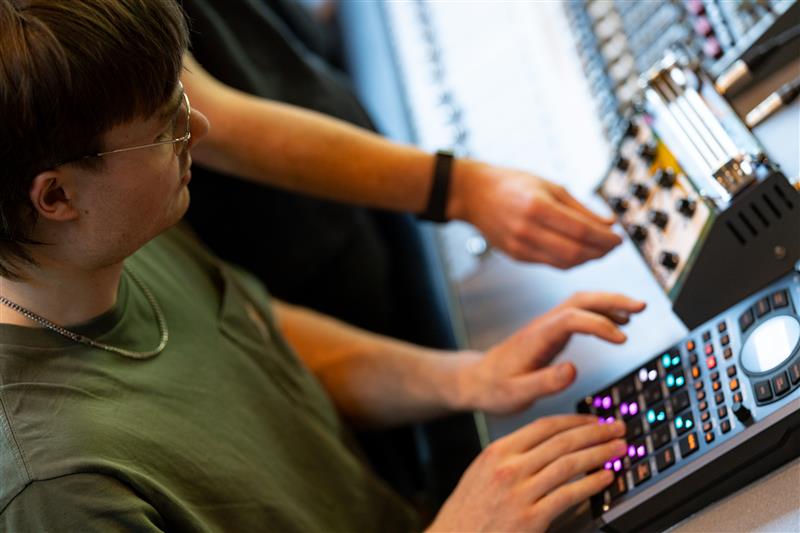
Tell us about your creative process using the Roland SP-404MKII with James Blake.
James is normally in synth land when we’re recording new song ideas with Dom Maker, his co-producer, on sample duties. Whenever he completes a song, we load parts of it into different samplers and drum machines. So, the plan is to bring the 404 into that side of things more and more.
I’ll load the 404 up with loads of cool sounds we can use in jams. It adds an element of spontaneity, and it can be played like an instrument. Again, you can get some amazing results when used in combination with the 404’s onboard effects. I’m also really excited to sync it with James’ Cirklon MIDI sequencer so the beats will be played in time with the entire studio ecosystem.
What’s your favorite thing about the Roland SP-404MKII?
The 404 easily fits into every workflow. It’s smooth and easy to use, whatever you’re doing, which is important in an era of music where everything seems to happen quickly. There’s a lot of focus around things being efficient in the studio. People don’t like to be waiting around for things to be set up and working, so the fact that you can have the Roland SP-404MKII set up and ready to go in a flash is a godsend.
I also love the chromatic feature, which is definitely overlooked. I like to take snippets of melodic sounds—chords or melodies–and put those pads into chromatic mode. Then, using the scale selector, I can pick different scales and play these samples back in a new melodic pattern. I’m not much of a music theory muso, so to be able to have the major key pads light up, for example, is really helpful and makes for fun jamming.
"The SPD Sampling Pads are industry standard, and I love using them in the studio. They’re useful for allowing drummers to play samples while recording live."
Name some of your favorite gear aside from the SP-404MKII.
I have to mention a bespoke spring reverb I’ve recently had put together by an amazing tech and friend, Bob Leadbeater. I was after a playable spring with filters and overdrive, something inspired by the KNAS Moisturizer which is also great. I shared my ideas with Bob, who used his genius to design the circuits and put the thing together. I’m so grateful for his help making it. Paired with the SP-404 or any Roland drums is whopping; you can get some seriously mind-blowing sounds.
The SPD Sampling Pads are industry standard, and I love using them in the studio. They’re useful for allowing drummers to play samples while recording live—to creatively trigger sounds or play electronic percussion parts along with the live band. This type of thing is great for artists who blend electronic and acoustic sounds, allowing drummers to get the best of both worlds during their performances.
